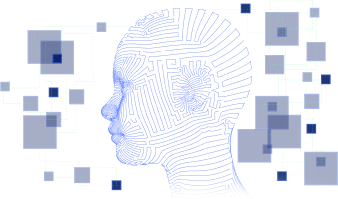 AI/ML & DATA SCIENCE
AI/ML & DATA SCIENCE Python is a high-level, interpreted programming language known for its simplicity, readability, and versatility. Python emphasizes code readability and ease of use, making it an excellent choice for development of various AI/ML and Data Science modeling.
Key Characteristics of Python:
-
Readable Syntax: Python uses a clean and readable syntax, which makes it easy for developers to express concepts in fewer lines of code.
-
Interpreted Language: Python is an interpreted language, meaning the code is executed line by line by an interpreter, which simplifies development and debugging.
-
High-Level Language: Python is a high-level language, abstracting complex low-level details, making it more accessible for developers.
-
Extensive Standard Library: Python comes with a comprehensive standard library that provides modules and packages for a wide range of tasks, simplifying development by offering ready-to-use functionality.
-
Dynamically Typed: Python is dynamically typed, meaning variable types are determined at runtime, providing flexibility but also requiring careful attention to data types.
-
Object-Oriented Programming (OOP): Python supports object-oriented programming, allowing developers to structure their code using classes and objects.
-
Cross-Platform: Python is platform-independent, allowing code to run on various operating systems with little or no modification.
-
Community and Ecosystem: Python has a large and active community of developers, contributing to a rich ecosystem of libraries, frameworks, and tools.
Use Cases and Applications of Python:
-
Web Development:
• Django: A high-level web framework for building robust and scalable web applications.
• Flask: A lightweight web framework suitable for small to medium-sized web applications.
-
Data Science and Machine Learning:
• NumPy and SciPy: Libraries for scientific computing, including support for large, multi-dimensional arrays and mathematical functions.
• Pandas: A data manipulation and analysis library.
• HTTP/HTTPS: Widely used for communication between IoT devices and cloud-based platforms.
• Scikit-learn: A machine learning library providing tools for data mining and data analysis.
-
Artificial Intelligence (AI):
• TensorFlow and PyTorch: Deep learning frameworks widely used for building and training neural networks.
-
Automation and Scripting:
• Python is commonly used for automating repetitive tasks, system administration, and scripting.
-
Desktop GUI Applications:
• Tkinter: A built-in Python library for creating simple graphical user interfaces (GUIs).
• PyQt and wxPython: External libraries for creating more complex desktop applications.
-
Network Programming:
• Python is used for network programming tasks, including socket programming and creating network applications.
-
Internet of Things (IoT):
• Python is employed in IoT projects for its simplicity and versatility.
-
Scientific Computing:
• Python is widely used in scientific and research applications, with libraries such as Matplotlib for data visualization.
-
Educational Purposes:
• Python is often used as a first programming language for teaching due to its readability and ease of learning.
-
Cloud Computing:
• Python is used for scripting and automation in cloud environments, and many cloud service providers offer SDKs and APIs in Python.
-
Cybersecurity:
• Python is used for tasks such as penetration testing, security analysis, and scripting in the field of cybersecurity.
Python's wide range of applications and its large supportive community contribute to its popularity as a programming language for diverse development purposes. Its simplicity and readability make it an excellent choice for rapid development and prototyping.











Website Designing